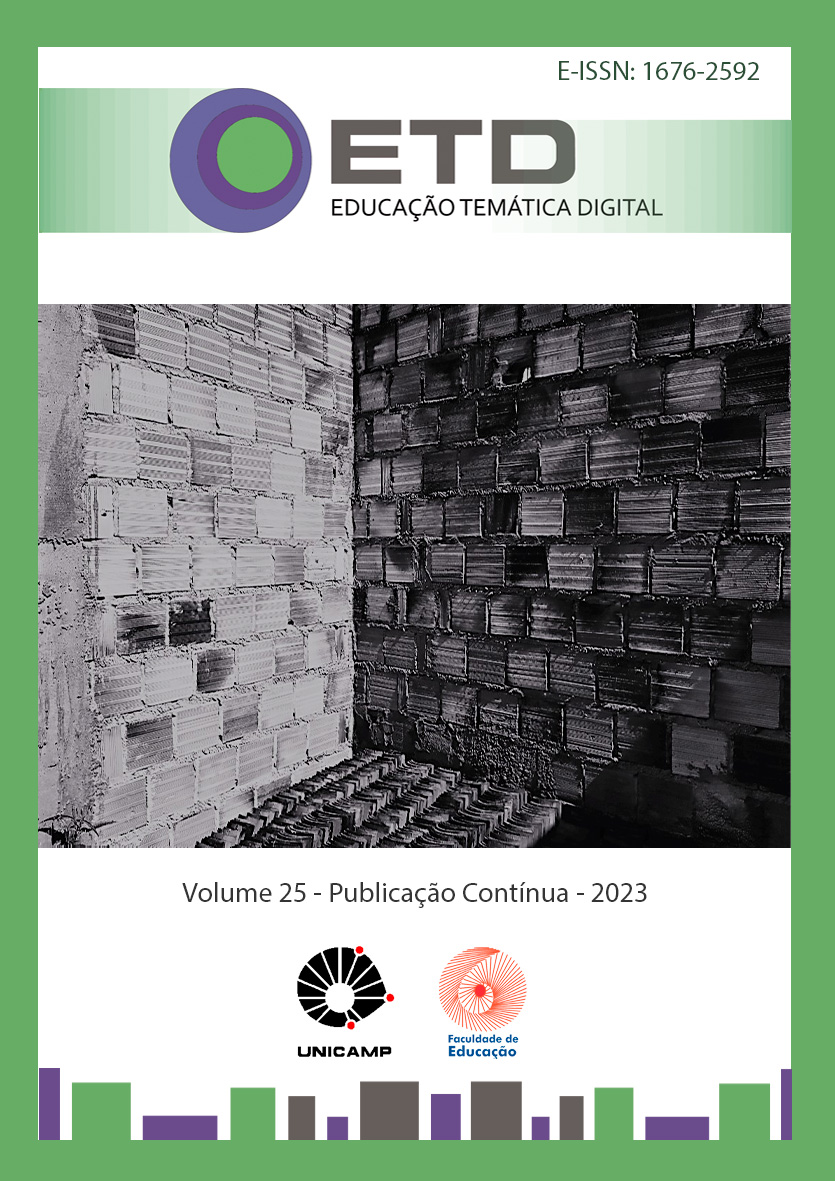Abstract
This work aimed to explore the effectiveness of social networks as a teaching-learning resource to the virtual learning environment (VLE) traditionally employed in several levels in the Distance Learning structure. For this, a case study was carried out with two undergraduate courses offered by University ZZZZ: Calculus I and Literature Theory. The case study started with the creation and management of one profile in the social network Instagram for each undergraduate course individually throughout its offering period in the 2021 first quarter. During this period, quantitative e qualitative data of students’ use were gathered. The results obtained showed acceptance and enthusiasm of students in relation to social network use as a complementary support tool with low complexity, as well as presented similar levels of students’ engagement from both courses. These results allow us to foresee new possibilities of organic student's interaction with content formally exposed in virtual learning environmental.
References
BUNCE, Diane M.; FLENS, Elizabeth A.; NEILES, Kelly Y. How long can students pay attention in class? A study of student attention decline using clickers. Journal of Chemical Education, v. 87, n. 12, p. 1438-1443, 2010.
DUBOVI, Ilana; TABAK, Iris. An empirical analysis of knowledge co-construction in YouTube comments. Computers & Education, v. 156, p. 103939, out. 2020. Elsevier BV. http://dx.doi.org/10.1016/j.compedu.2020.103939 .
GASQUE, Kelley Cristine Gonçalves Dias. Internet, mídias sociais e as unidades de informação. Brazilian Journal of Information Science: research trends, v. 10, n. 2, 1 nov. 2016. Disponível em: https://revistas.marilia.unesp.br/index.php/bjis/article/view/5929 . Acesso em junho de 2021.
JUNIOR, Luiz Carlos Leal; DE ANDRADE, Cecília Pereira; MARTINS, Egídio Rodrigues; DA SILVA, Lilian Esquinelato. Ensino de matemática através de videoaulas: um olhar pela teoria da atenção. Tangram - Revista de Educação Matemática. Dourados, MS, v. 1, n. 3, pp. 40-63, 2018. ISSN: 2595-0967.
LIU, Su-Houn; LIAO, Hsiu-Li; PRATT, Jean A. Impact of media richness and flow on e-learning technology acceptance. Computers & Education, v. 52, n. 3, pp. 599-607, abr. 2009. Elsevier BV. DOI http://dx.doi.org/10.1016/j.compedu.2008.11.002 .
MARTINO, Luis Mauro Sá. Teoria das Mídias Digitais: linguagens, ambientes e rede. 2. ed. Petrópolis: Vozes, 2015.
MCLOUGHLIN, Catherine; LEE, Mark J W. The three p’s of pedagogy for the networked society: personalization, participation, and productivity. International Journal of Teaching and Learning in Higher Education, v. 20, n. 1, pp. 10-27, 2008. Disponível em: http://www.isetl.org/ijtlhe/ . Acesso em junho de 2021.
MOORE, M.G. Editorial: Distance Education Theory. American Journal of Distance Education, v. 5, n. 3, p. 1-6, 1991.
MOORE, M.G. Independent study. In: BOYD, R.; J.W. APPS AND ASSOCIATES (org.). Redefining the discipline of adult education. São Francisco: Jossey-Bass, 1980. p. 16-31.
MOORE, M.G. Learner autonomy: the second dimension of independent learning. Convergence, v. 2, p. 76-88, 1972.
OLNEY, Andrew M. et al. Attention in educational contexts: the role of the learning task in guiding attention. The Handbook of Attention. The MIT Press, 2015.
PEREIRA, Jocimario Alves; DA SILVA, Jairo Ferreira Jr.; DA SILVA, Everton Vieira. Instagram como ferramenta de aprendizagem colaborativa aplicada ao ensino de Química. Revista Debates em Ensino de Química, v. 5, n. 1, p. 119-131, 2019.
RABELLO, Cíntia Regina Lacerda. Interação e aprendizagem em Sites de Redes Sociais: uma análise a partir das concepções sócio-históricas de Vygotsky e Bakhtin. Revista Brasileira de Linguística Aplicada, v. 15, n. 3, pp. 735-760, set. 2015. FapUNIFESP (SciELO). http://dx.doi.org/10.1590/1984-639820156288 .
SCARDAMALIA, Marlene. Collective Cognitive Responsibility for the Advancement of Knowledge. In: B. SMITH (org.). Liberal education in a knowledge society. Open Court, 2002. p. 67-68.
SHERER, Pamela; SHEA, Timothy. Using online video to support student learning and engagement. College Teaching, v. 59, n. 2, p. 56-59, 2011.
SZPUNAR, Karl K.; KHAN, Novall Y.; SCHACTER, Daniel L. Interpolated memory tests reduce mind wandering and improve learning of online lectures. Proceedings of the National Academy of Sciences of the United States of America, v. 110, n. 16, p. 6313-6317, 2013.
YOUNG, Mark S.; ROBINSON, Stephanie; ALBERTS, Phil. Students pay attention!: Combating the vigilance decrement to improve learning during lectures. Active Learning in Higher Education, v. 10, n. 1, p. 41-55, 2009.

This work is licensed under a Creative Commons Attribution-NonCommercial-NoDerivatives 4.0 International License.
Copyright (c) 2023 ETD - Educação Temática Digital


